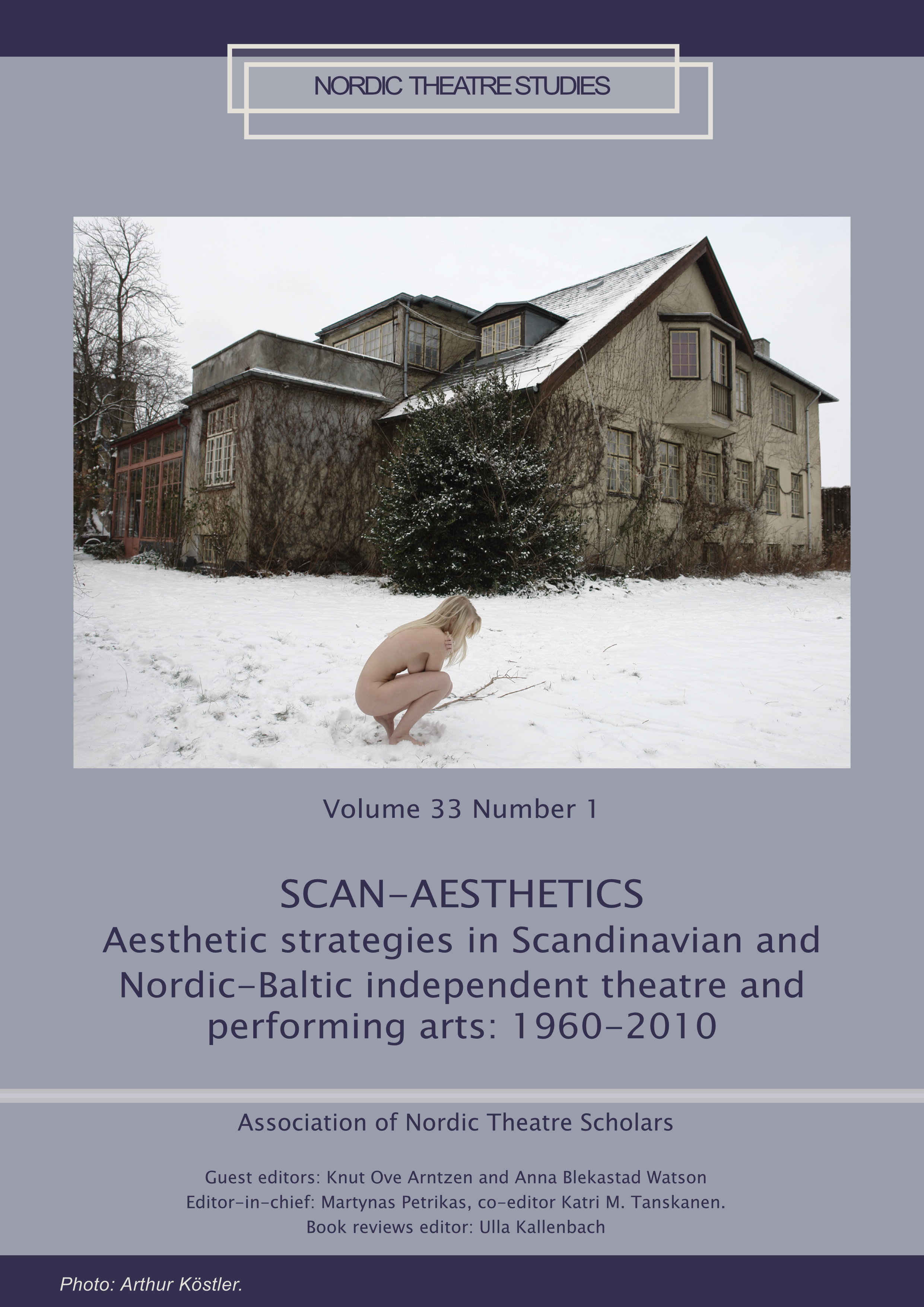Maciunas
Eccentric Artist and Seminal Influence
DOI:
https://doi.org/10.7146/nts.v33i1.131989Keywords:
Maciunas, Fluxus, avant-garde, performance, music, conceptual art, Scandinavia, LithuaniaAbstract
Fluxus was an inspirational movement based in New York in the 1960s that consisted of a group of more than fifty loosely connected artists from various disciplines, who made significant experiments to develop music, conceptual art, visual art, performance art, video, and film. They participated in eclectic concerts, media, performative events, and installations in the USA and Europe. In this paper, I want to examine how George Maciunas, a Lithuanian exile and its nominal organiser, had a seminal influence on avant-garde art in America and Europe and, despite avowing an open attitude towards what could be art, he also enforced draconian ideas about what could be included and what could not. In particular I want to emphasize his influence in Scandinavia because most of the literature on Fluxus has focused on his work in the USA and Germany.
References
Andersen, Eric. “What is…?”, http://what-is-eric-andersen.net/PERFORMANCE-FESTIVAL-ODENSE.htm
The Avant Garde from Futurism to Fluxus, Jonas Mekas Visual Art Centre, 2007.
Bernstein, Roslyn and Shael Shapiro, eds., Illegal Living. Vilnius: Jonas Mekas Foundation, 2010.
Friedman, Ken. “Fluxus and Company,” in The Fluxus Reader, ed. Ken Friedman, Academy Editions, Chichester, West Sussex, 1998.
Friedman, Ken. “The Case for Bengt af Klintberg”, Performance Research, vol. 11, 2006, pp. 137-144.
Julie Henault, “From America to Lithuania: The Fortunes of the Development of the
Fluxus Movement in a Post-Communist Country”, maitrise, 2005.
Hendricks, J. ed. Fluxus etc. Addenda 1 (catalogue), INK., New York, 1983
Kellein, Thomas. The Dream of Fluxus, Edition Hansjörg Mayer, London and Bangkok, 2007.
Klintberg, Bengt af, ed., Svensk Fluxus/ Swedish Fluxus. Rönnells Antikvariat: 2006.
Klintberg, Bengt af, “Fluxus Games and Contemporary Folklore: on the Non-Individual
Character of Fluxus Art”, https://monoskop.org/images/9/97/Klintberg_Bengt_af_1993_Fluxus_Games_and_Contemporary_Folklore.pdf
Landsbergis, Vytautas interview by Petra Stegmann, curator, Fluxus East. Berlin: Künstlerhaus, Bethanien,2007.
Øram, Tania and Jesper Olsson, A Cultural History of the Avant-Garde in the Nordic Countries 1950-1975. Leiden: Brill/Rodopi, Leiden, 2016.
Smith, Owen. “Developing a Fluxable Forum: Early Performance and Publishing” in The Fluxus Reader, ed. Ken Friedman, Academy Editions, Chicester, West Sussex, 1998.
Rothfuss, Joan. Topless Cellist: The Improbable Life of Charlotte Moorman. MIT Press, Cambridge, Mass., 2014.
Trilupaityte, Skaidra “Guggenheim’s global travel and the appropriation of a national avant-garde for cultural planning in Vilnius”, International Journal of Cultural Policy Vol. 15, No. 1, February 2009, pp. 123–138.
Stegmann, Petra ed., “The Lunatics are on the Loose…”: European Fluxus Festivals 1962-1977. Potsdam: DOWN WITH ART!, 2013.
Stegmann, Petra, curator. Fluxus East. Berlin: Künstlerhaus Bethanien, 2007.
Williams, Emmett and Ann Noel (eds) Mr. Fluxus. A Collective Portrait of George Maciunas 1931-1978. London: Thames and Hudson, Ltd., 1997.
Downloads
Published
How to Cite
Issue
Section
License
The copyright belongs to the authors and Nordic Theatre Studies. Users can use, reuse and build upon the material published in the journal but only for non-commercial purposes. Users are allowed to link to the files, download the files, distribute the files on a local network (preferably by links), upload the files to local repositories if their institutions require them to do so, but not republish the files without proper agreements with the journal and the author.

